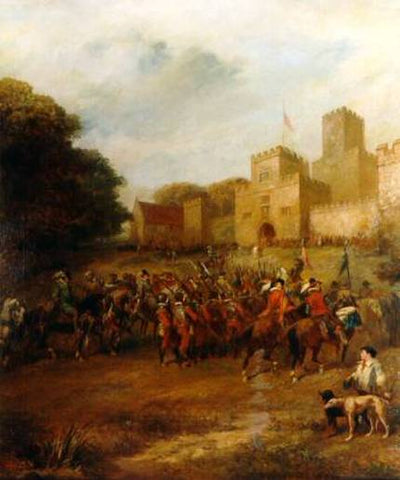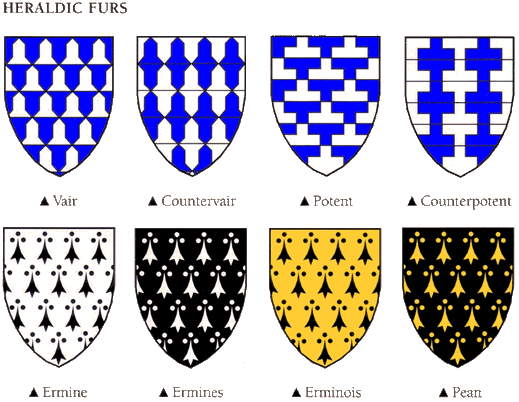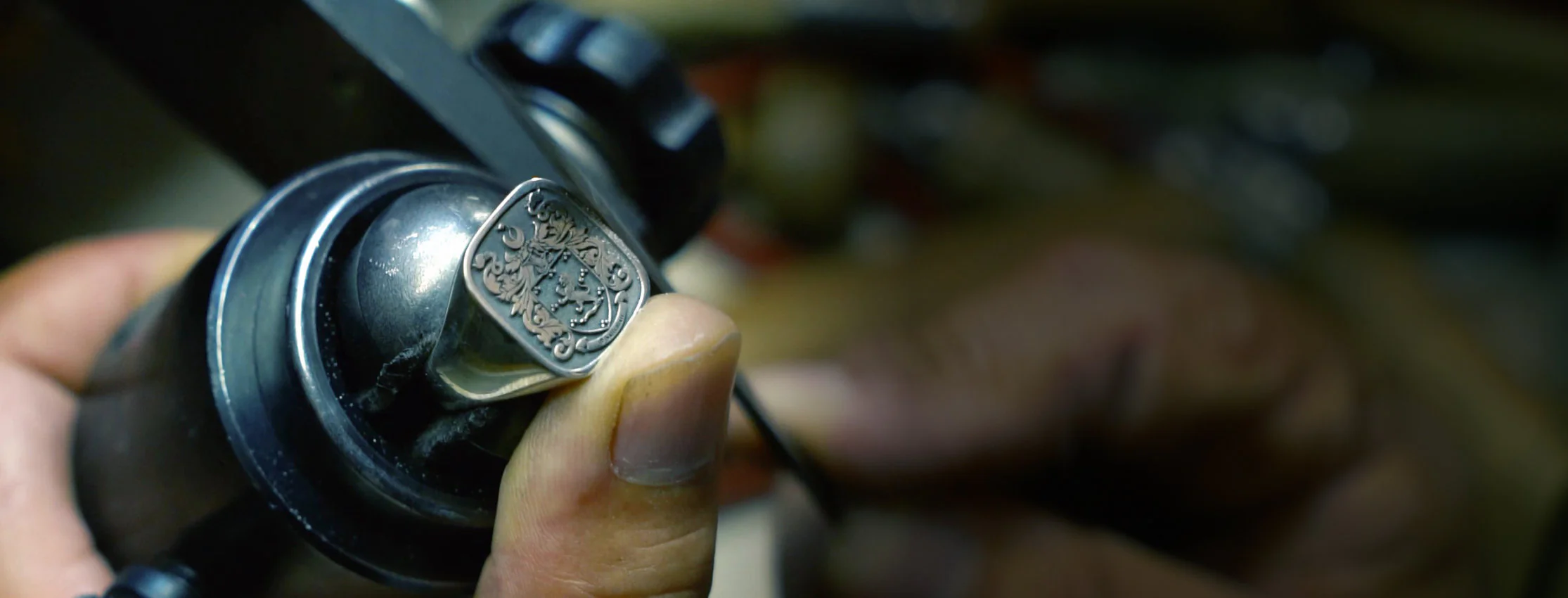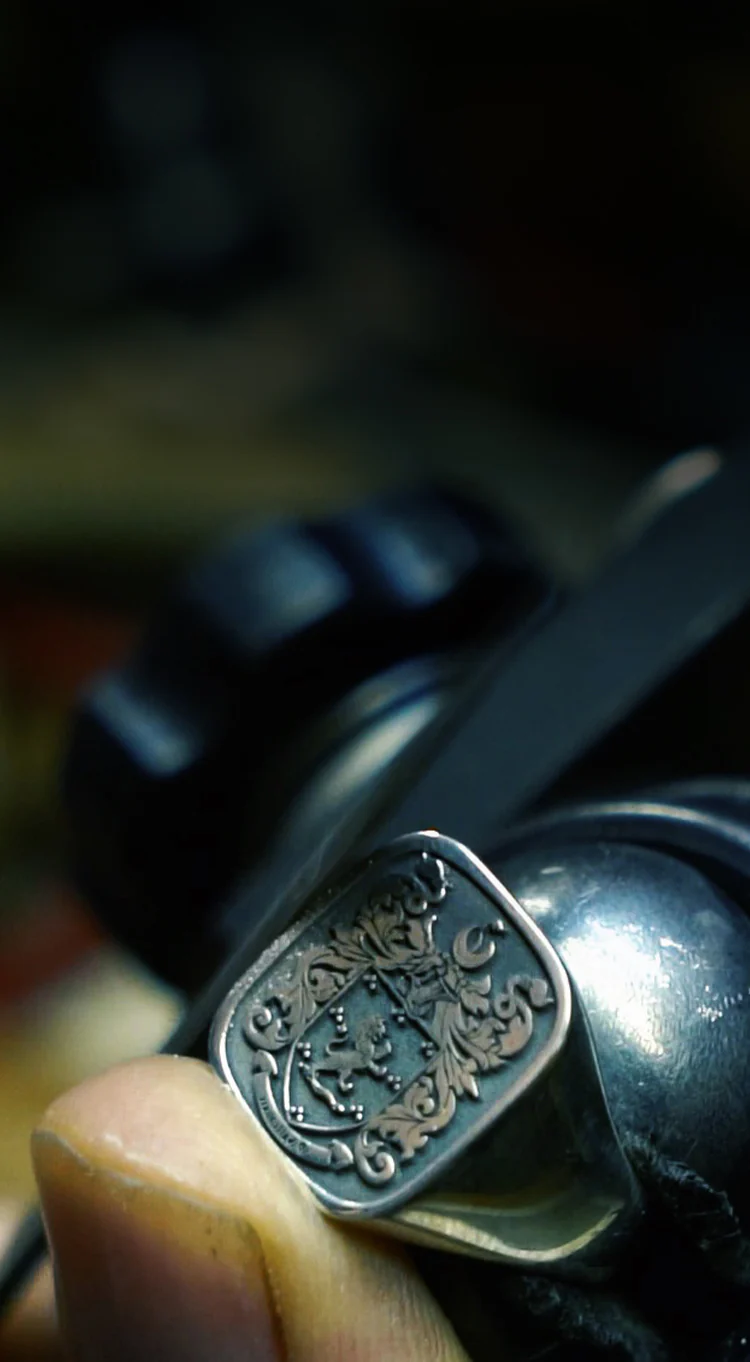

The Language of Heraldry

Old French is the language of heraldry and many of the phrases used in the descriptions of the coats of arms are of Anglo-French derivation, the primary reason for this is that the French language was the first of the native tongues of Europe to arrive at anything resembling an equality with Latin. Since the time of the Roman Empire, Latin was the language of officialdom and had gradually become the everyday speech of people in Britain, France, Spain, and other western European countries.
When the Roman Empire crashed, the rule of Rome was overthrown in many countries and Latin was replaced with the local dialect. In some countries such as France and Spain Latin lived on, albeit in a changed form. The French language, itself derived from Latin, became a very fluent and powerful medium of expression and by the end of the 11th Century French was the language in which the cultivated gentleman expressed himself whether he were French by birth, or English, Irish, Sicilian, or even Palestinian. Latin remained the language of choice for the scholar and the religious.
It was a strange accident which brought this to be true in England. The Norman Conquest destroyed a great fabric of literature which the invading Frenchmen for all their apparent brilliance could not match. The literature written in Old English ranged from poetry, drama, history and biography to philosophy and the novel but the Norman Conquest put the control of the country in the hands of French speakers. For 300 years the official languages of England were Latin and French until the loosening of the feudal system returned the English language to it people.
It was only natural that if French should be the lingua franca of the worldly gentleman, just as Latin was of the churchman and the scholar, Heraldry would also speak that language. There was a movement in England around 1400 to substitute English words for old French terms in Heraldry, Silver instead of Argent, Gold instead of Or and so on, but this movement died out and the French terms are used to this day. This is not surprising, Norman French was used in the English Law Courts for pleading until 1735, so it’s use to the present day in Heraldry is understandable.
Now to the terms used in Heraldry. A shield, which is the main and essential part of the coat of arms, may be of a certain number of colors, of metals or, of furs. These are the 3 possible bases of the shield. This base is called the field. The derivation of these three classes is straightforward. The colors are those which were the earliest forms of differentiation between one shield and another. The metals are derived from the nature of a shield. The furs come from the rich drapings thrown or worn over the armor of wealthier knights.
All heraldic colors are primary. There are no pastel shades in Heraldry. The colors are:
Azure = Blue
Gules = Red
Purpure = Purple
Sable = Black
Vert = Green
There are two metals:
Argent = Silver
Or = Oro
There are four furs:
Ermine = White fur with black spots
Ermines = Black fur with white spots
Erminois = Gold fur with black spots
Vair or Vaire = Rows of small shields alternately reversed
Two other rarely used furs are paen, another variant of ermine, this time black with gold ermine spots, and potent, a fur composed of T-shaped divisions.

The rules of Heraldry prohibit placing a color on a color, a metal upon a metal or, a fur upon a fur. There is one well known exception to the rule about metals and this is on the well known arms for the kingdom of Jerusalem, where the gold cross and crosses are placed on a silver field. On the basis of these three materials, Color, Metal and fur all coats of arms are created. The items placed on the field are called charges. The original shields were very simple with few charges as there were very few knights and nobleman that had arms. However as Coats of Arms became more widespread the need to differentiate arms led to the addition of more and more charges to the shield.
The earliest charges were such things as bends ( diagonal lines), Chevrons (inverted v’s), chiefs (band across top of shield), piles ( v shape), fesses (horizontal lines) and crosses. These charges would naturally suggest themselves to the early users. For example, Azure a bend argent ( blue background with a silver diagonal line). This was a very easy design for a coat of arms. Generally speaking the simpler a coat of arms is the further back it can be dated. Many writers have asserted that every coat of arms must consist of at least the field and a charge, however there are a number of exceptions to this, The Brittany arms which are simply “Ermine”.
A plain shield of Ermine was borne by John of Brittany, Earl of Richmond who died in 1399. Additional examples of a single field shield include: A plain shield of Gold was borne by the Italian family of Bandinelli,, of Silver by the French families of Maigret and Bocquet, of Blue by the French family Fizeaux, of Red by the House of Dalbret borne by the kings of Navarre, Spain, and Black by the family of Gornay. A plain Green shield is borne by the French family Barbotte and Purple by the French family Aubert.

Back to menu
Shop Our Products


-
-
Bring Your Idea to Life
Start with a personalized consultation, sharing your vision and preferences with our expert design team. With over 20 years experience we have the knowledge and craftsmanship to create a unique piece of jewelry that will be cherished for generations to come.
Join Thousands Preserving Their Legacy Through Custom Jewelry
Sign up for exclusive offers, design inspiration, and early access to limited releases.